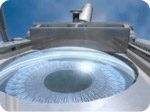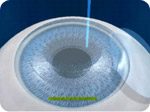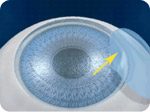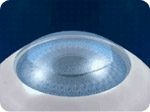Laser Eye Surgery
Laser eye surgery is a reliable way to permanently correct vision. There is a significant number of laser treatments, the most successful being LASIK and PRK. These methods correct myopia, hyperopia, and astigmatism, and can, therefore, help you finally get rid of glasses and contact lenses. Laser vision correction has been in use since the 1980s worldwide. So far, laser techniques have improved so much that they are very popular because they are safe, successful, and simple.
Laser vision correction is a simple procedure, completely painless, and permanently reduces or fully eliminates the initial diopter. The outcome is the return of a clear vision. The success of the operation depends on the ophthalmologist’s expertise and experience.
Use of an Excimer Laser
Laser vision correction belongs to refractive eye surgery and uses top-notch technology – the excimer laser. This laser is the product of high technology, initially created by IBM. It is extremely precise and does not cause any thermal radiation. The frequency of the excimer laser is 400 Hz, which means that it reshapes the cornea very quickly. The whole procedure of the laser eye surgery lasts about 15 minutes, and the laser procedure is about one minute per eye.
Being a refractive anomaly, the diopter is a result of irregular refraction of light entering the eye. The laser changes the shape of the cornea from irregular to regular which enables regular refraction of light and clear vision.
Before
Before the intervention, your doctor will carry out an extensive examination to determine if your eyes are healthy and suitable for laser eye surgery. In case you wear soft contact lenses, don’t wear them at least 10 days before the examination. In the case of semi-hard or hard contact lenses, you do not wear them at least for a month.
Preparation
Your doctor will execute extensive examination of your eyes before the laser eye surgery to precisely determine their health, corneal thickness, and the anomaly degree of your vision. When the examination is finished, on the day of the intervention you will lie on the treatment bed and the doctor will put a few drops of an anesthetic in your eyes.
LASIK Intervention
Intervention
In the first part of the procedure, the doctor makes a thin membrane like a flap
on the surface of your cornea. At the time your vision is darkened for a few moments due to an increase of eye pressure. Then the surface membrane (the LASIK flap) is carefully folded backward to uncover the lower layer of the cornea. At that moment your vision will come back but it will be blurry.
For the next step, the doctor will ask you to concentrate and keep your eyes on the green light. That is the time of the laser removal of a diopter, i.e. the laser intervention. Due to the high speed of the laser system, an average treatment lasts only a couple of seconds.
When the laser intervention is finished, the folded membrane (the corneal flap) is returned to its initial position where it adheres to the cornea and serves as a natural protective layer. The doctor will put a few drops into your eyes to prevent a potential infection. This marks the end of the laser eye surgery.




After
You will be able to see around you immediately with increased visual acuity. Still, after the first few hours after the intervention, you may feel itching or prickling and be sensitive to light. You will need some time to relax and avoid activities that strain your eyes, such as reading and watching TV, while your eye is recovering.
PRK
PRK or Photorefractive keratectomy is a laser treatment suitable for the patients who have a poor-quality cornea, prone to thinning and curvature. Such curvature is not suitable for the direct influence of the laser, and it is necessary to strengthen and thus be capable to undergo the laser treatment. This method is applied for minor to moderate myopia, moderate astigmatism, and for patients whose corneal thickness is not big enough for LASIK. Unlike the LASIK treatment, PRK is not completely painless. The complete PRK intervention on both eyes lasts about 15 minutes. It is performed in local anesthetic with eye drops.
Course of Operation
During the PRK intervention the doctor does not create a corneal flap, but the epithelium is fully removed. Mechanical removal of the epithelium is just the first step. The epithelium has an excellent ability to regenerate, so there is no need for any stitches. Pain occurs after the anesthetics and lasts for a couple of days until the epithelium fully recovers. The excimer laser remodels the corneal surface by directly influencing its middle layers. That way the laser enables adequate refraction and clear vision.
In the end, the doctor puts antibiotic drops into the eye. The therapeutic lens is placed in the eye to provide mechanic protection until the epithelium grows.
Postoperative Care
In the first few days after the intervention, you may feel mild pain in the operated eye, as well as tearing and an itchy eye. With the PRK, the doctor usually performs an intervention on one eye only. After the intervention, the patients are capable to go to work after about a week. The postoperative treatment with drops lasts a couple of months and it is an integral part of the PRK treatment. The outcome is the same for both methods, but it takes more time with PRK. Visual acuity improves gradually. After a month since the PRK intervention, you have a completely clear vision.